Technological Opportunity Analysis: Assistive Technology for Blind and Visually Impaired People
Abstract
1. Introduction
2. Theoretical Background
2.1. Patent Map
2.2. Patent Network
3. Methodology
3.1. Generative Topographic Mapping
3.2. Social Network Analysis
3.3. Technology Level Map
4. TOA in the Field of the Assistive Technology for Blind and Visually Impaired People
4.1. Overall Research Framework
4.2. Data Collection and Preprocessing
4.3. Identifying Vacant Technology Fields
4.4. Investigation into Technology Opportunities
4.4.1. Social Network Analysis
4.4.2. Vacant Technology Level Map
4.5. Results and Discussion
5. Conclusions
Author Contributions
Funding
Conflicts of Interest
References
- World Health Organization. Visual Impairment and Blindness. Available online: https://www.who.int/news-room/fact-sheets/detail/blindness-and-visual-impairment (accessed on 17 August 2020).
- Swenor, B.K.; Lee, M.J.; Varadaraj, V.; Whitson, H.E.; Ramulu, P.Y. Aging with vision loss: A framework for assessing the impact of visual impairment on older adults. Gerontologist 2019, 60, 989–995. [Google Scholar] [CrossRef] [PubMed]
- Holden, B.A.; Fricke, T.R.; Ho, S.M.; Wong, R.; Schlenther, G.; Cronjé, S.; Butnett, A.; Papas, E.; Naidoo, K.S.; Frick, K.D. Global vision impairment due to uncorrected presbyopia. Arch. Ophthalmol. 2008, 126, 1731–1739. [Google Scholar] [CrossRef] [PubMed]
- Bourne, R.R.; Flaxman, S.R.; Braithwaite, T.; Cicinelli, M.V.; Das, A.; Jonas, J.B.; Keeffe, J.; Kempen, J.H.; Leasher, J.; Limburg, H.; et al. Magnitude, temporal trends, and projections of the global prevalence of blindness and distance and near vision impairment: A systematic review and meta-analysis. Lancet Glob. Health 2017, 5, e888–e897. [Google Scholar] [CrossRef]
- Elmannai, W.M.; Elleithy, K.M. A highly accurate and reliable data fusion framework for guiding the visually impaired. IEEE Access 2018, 6, 33029–33054. [Google Scholar] [CrossRef]
- Hersh, M.A.; Johnson, M.A. On modelling assistive technology systems–Part I: Modelling framework. Technol. Disabil. 2008, 20, 193–215. [Google Scholar] [CrossRef]
- Bhowmick, A.; Hazarika, S.M. An insight into assistive technology for the visually impaired and blind people: State-of-the-art and future trends. J. Multimodal User Interfaces 2017, 11, 149–172. [Google Scholar] [CrossRef]
- Farcy, R.; Leroux, R.; Jucha, A.; Damaschini, R.; Grégoire, C.; Zogaghi, A. Electronic travel aids and electronic orientation aids for blind people: Technical, rehabilitation and everyday life points of view. In Proceedings of the Conference & Workshop on Assistive Technologies for People with Vision & Hearing Impairments Technology for Inclusion, Los Alamitos, CA, USA, 9–11 July 2006. [Google Scholar]
- Munteanu, D.; Ionel, R. Voice-controlled smart assistive device for visually impaired individuals. In Proceedings of the 2016 12th IEEE International Symposium on Electronics and Telecommunications (ISETC), Timisoara, Romania, 27–28 October 2016; pp. 186–190. [Google Scholar]
- Tapu, R.; Mocanu, B.; Zaharia, T. Wearable assistive devices for visually impaired: A state of the art survey. Pattern Recognit. Lett. 2018, 137, 37–52. [Google Scholar] [CrossRef]
- Schinazi, V.R.; Thrash, T.; Chebat, D.R. Spatial navigation by congenitally blind individuals. WIREs Cogn. Sci. 2016, 7, 37–58. [Google Scholar] [CrossRef]
- Hakobyan, L.; Lumsden, J.; O’Sullivan, D.; Bartlett, H. Mobile assistive technologies for the visually impaired. Surv. Ophthalmol. 2013, 58, 513–528. [Google Scholar] [CrossRef]
- Lee, H.; Kim, C.; Cho, H.; Park, Y. An ANP-based technology network for identification of core technologies: A case of telecommunication technologies. Expert Syst. Appl. 2009, 36, 894–908. [Google Scholar] [CrossRef]
- Coates, V.; Farooque, M.; Klavans, R.; Lapid, K.; Linstone, H.A.; Pistorius, C.; Porter, A.L. On the future of technological forecasting. Technol. Forecast. Soc. Chang. 2001, 67, 1–17. [Google Scholar] [CrossRef]
- Yoon, B.; Magee, C.L. Exploring technology opportunities by visualizing patent information based on generative topographic mapping and link prediction. Technol. Forecast. Soc. Chang. 2018, 132, 105–117. [Google Scholar] [CrossRef]
- Park, I.; Yoon, B. Technological opportunity discovery for technological convergence based on the prediction of technology knowledge flow in a citation network. J. Informetr. 2018, 12, 1199–1222. [Google Scholar] [CrossRef]
- Lee, S.; Yoon, B.; Park, Y. An approach to discovering new technology opportunities: Keyword-based patent map approach. Technovation 2009, 29, 481–497. [Google Scholar] [CrossRef]
- Ernst, H. The use of patent data for technological forecasting: The diffusion of CNC-technology in the machine tool industry. Small Bus. Econ. 1997, 9, 361–381. [Google Scholar] [CrossRef]
- Park, Y.; Yoon, B.; Lee, S. The idiosyncrasy and dynamism of technological innovation across industries: Patent citation analysis. Technol. Soc. 2005, 27, 471–485. [Google Scholar] [CrossRef]
- World Intellectual Property Organization. International Patent Classification (IPC). Available online: https://www.wipo.int/classifications/ipc/en/ (accessed on 20 August 2020).
- Leydesdorff, L.; Kushnir, D.; Rafols, I. Interactive overlay maps for US patent (USPTO) data based on International Patent Classification (IPC). Scientometrics 2014, 98, 1583–1599. [Google Scholar] [CrossRef]
- Kim, C.; Lee, H.; Seol, H.; Lee, C. Identifying core technologies based on technological cross-impacts: An association rule mining (ARM) and analytic network process (ANP) approach. Expert Syst. Appl. 2011, 38, 12559–12564. [Google Scholar] [CrossRef]
- Yoon, J.; Park, H.; Seo, W.; Lee, J.M.; Coh, B.Y.; Kim, J. Technology opportunity discovery (TOD) from existing technologies and products: A function-based TOD framework. Technol. Forecast. Soc. Chang. 2015, 100, 153–167. [Google Scholar] [CrossRef]
- Lee, C.; Jeon, J.; Park, Y. Monitoring trends of technological changes based on the dynamic patent lattice: A modified formal concept analysis approach. Technol. Forecast. Soc. Chang. 2011, 78, 690–702. [Google Scholar] [CrossRef]
- Klevorick, A.K.; Levin, R.C.; Nelson, R.R.; Winter, S.G. On the sources and significance of interindustry differences in technological opportunities. Res. Policy 1995, 24, 185–205. [Google Scholar] [CrossRef]
- Olsson, O. Technological opportunity and growth. J. Econ. Growth 2005, 10, 31–53. [Google Scholar] [CrossRef]
- Porter, A.L.; Detampel, M.J. Technology opportunities analysis. Technol. Forecast. Soc. Chang. 1995, 49, 237–255. [Google Scholar] [CrossRef]
- Mitchell, V.W. Using Delphi to forecast in new technology industries. Mark. Intell. Plan. 1992, 10, 4–9. [Google Scholar] [CrossRef]
- Jun, S.; Park, S.S.; Jang, D.S. Technology forecasting using matrix map and patent clustering. Ind. Manag. Data Syst. 2012, 112, 786–807. [Google Scholar] [CrossRef]
- Kim, Y.G.; Suh, J.H.; Park, S.C. Visualization of patent analysis for emerging technology. Expert Syst. Appl. 2008, 34, 1804–1812. [Google Scholar] [CrossRef]
- Hsueh, C.C.; Wang, C.C. The use of social network analysis in knowledge diffusion research from patent data. In Proceedings of the 2009 International Conference on Advances in Social Network Analysis and Mining, Athens, Greece, 20–22 July 2009; pp. 393–398. [Google Scholar]
- Son, C.; Suh, Y.; Jeon, J.; Park, Y. Development of a GTM-based patent map for identifying patent vacuums. Expert Syst. Appl. 2012, 39, 2489–2500. [Google Scholar] [CrossRef]
- Yoon, B.U.; Yoon, C.B.; Park, Y.T. On the development and application of a self–organizing feature map–based patent map. R&D Manag. 2002, 32, 291–300. [Google Scholar]
- Chen, R. Design patent map visualization display. Expert Syst. Appl. 2009, 36, 12362–12374. [Google Scholar] [CrossRef]
- Song, K.; Kim, K.S.; Lee, S. Discovering new technology opportunities based on patents: Text-mining and F-term analysis. Technovation 2017, 60, 1–14. [Google Scholar] [CrossRef]
- Lee, C.; Kang, B.; Shin, J. Novelty-focused patent mapping for technology opportunity analysis. Technol. Forecast. Soc. Chang. 2015, 90, 355–365. [Google Scholar] [CrossRef]
- Wold, S.; Esbensen, K.; Geladi, P. Principal component analysis. Chemom. Intell. Lab. Syst. 1987, 2, 37–52. [Google Scholar] [CrossRef]
- Johnson, R.A.; Wichern, D.W. Applied Multivariate Statistical Analysis, 6th ed.; Prentice Hall: Upper Saddle River, NJ, USA, 1988. [Google Scholar]
- Kohonen, T. The self-organizing map. Proc. IEEE 1998, 78, 1464–1480. [Google Scholar] [CrossRef]
- Bishop, C.M.; Svensén, M.; Williams, C.K. GTM: The generative topographic mapping. Neural Comput. 1998, 10, 215–234. [Google Scholar] [CrossRef]
- Jeong, Y.; Lee, K.; Yoon, B.; Phaal, R. Development of a patent roadmap through the Generative Topographic Mapping and Bass diffusion model. J. Eng. Technol. Manag. 2015, 38, 53–70. [Google Scholar] [CrossRef]
- Strogatz, S.H. Exploring complex networks. Nature 2001, 410, 268–276. [Google Scholar] [CrossRef] [PubMed]
- Gelsing, L. Innovation and the Development of Industrial Networks. In National Systems of Innovation: Toward a Theory of Innovation and Interactive Learning; Lundvall, B.A., Ed.; Anthem Press: New York, NY, USA, 2010; pp. 119–132. [Google Scholar]
- Yoon, B.; Park, Y. A text-mining-based patent network: Analytical tool for high-technology trend. J. High Technol. Manag. Res. 2004, 15, 37–50. [Google Scholar] [CrossRef]
- Breschi, S.; Lissoni, F. Knowledge networks from patent data. In Handbook of Quantitative Science and Technology Research: The Use of Publication and Patent Statistics in Studies of S&T Systems; Moed, H., Glänzel, W., Schmoch, U., Eds.; Springer: Dordrecht, The Netherlands, 2004; pp. 613–643. [Google Scholar]
- Redner, S. How popular is your paper? An empirical study of the citation distribution. Eur. Phys. J. B-Condens. Matter Complex Syst. 1998, 4, 131–134. [Google Scholar] [CrossRef]
- Hall, B.H.; Adam, B. The NBER Patent-Citations Data File: Lessons, Insights, and Methodological Tools. Pat. Cit. Innov. Window Knowl. Econ. 2002, 403–470. [Google Scholar] [CrossRef]
- Lai, K.K.; Wu, S.J. Using the patent co-citation approach to establish a new patent classification system. Inf. Process. Manag. 2005, 41, 313–330. [Google Scholar] [CrossRef]
- Stuart, T.E.; Podolny, J.M. Local search and the evolution of technological capabilities. Strateg. Manag. J. 1996, 17, 21–38. [Google Scholar] [CrossRef]
- Courtial, J.; Callon, M.; Sigogneau, A. The use of patent titles for identifying the topics of invention and forecasting trends. Scientometrics 1993, 26, 231–242. [Google Scholar] [CrossRef]
- OCSE. Using Patent Data as Science and Technology Indicators: Patent Manual 1994; OECD: Paris, France, 1994.
- Breschi, S.; Lissoni, F.; Malerba, F. Knowledge-relatedness in firm technological diversification. Res. Policy 2003, 32, 69–87. [Google Scholar] [CrossRef]
- Engelsman, E.C.; van Raan, A.F. A patent-based cartography of technology. Res. Policy 1994, 23, 1–26. [Google Scholar] [CrossRef]
- Scott, J. Social network analysis. Sociology 1988, 22, 109–127. [Google Scholar] [CrossRef]
- Ter Wal, A.L.; Boschma, R.A. Applying social network analysis in economic geography: Framing some key analytic issues. Ann. Reg. Sci. 2009, 43, 739–756. [Google Scholar] [CrossRef]
- Newman, M.E. Who is the best connected scientist? A study of scientific coauthorship networks. In Complex Networks; Ben-Naim, E., Frauenfelder, H., Toroczkai, Z., Eds.; Springer: Berlin/Heidelberg, Germany, 2004; Volume 650, pp. 337–370. [Google Scholar]
- Brass, D.J.; Burkhardt, M.E. Centrality and power in organizations. Netw. Organ. Struct. Form Action 1992, 191, 198–213. [Google Scholar]
- Freeman, L.C. Centrality in social networks conceptual clarification. Soc. Netw. 1978, 1, 215–239. [Google Scholar] [CrossRef]
- Ho, Y.; Chiu, H. A social network analysis of leading semiconductor companies’ knowledge flow network. Asia Pac. J. Manag. 2013, 30, 1265–1283. [Google Scholar] [CrossRef]
- Park, S.; Lee, S.J.; Jun, S. A network analysis model for selecting sustainable technology. Sustainability 2015, 7, 13126–13141. [Google Scholar] [CrossRef]
- Borgatti, S.P. Centrality and network flow. Soc. Netw. 2005, 27, 55–71. [Google Scholar] [CrossRef]
- Yoon, B.; Park, I.; Yun, D.; Park, G. Exploring promising vacant technology areas in a technology-oriented company based on bibliometric analysis and visualisation. Technol. Anal. Strateg. Manag. 2009, 31, 388–405. [Google Scholar] [CrossRef]
- Joung, J.; Kim, K. Monitoring emerging technologies for technology planning using technical keyword based analysis from patent data. Technol. Forecast. Soc. Chang. 2017, 114, 281–292. [Google Scholar] [CrossRef]
- Kürtössy, J. Innovation indicators derived from patent data. Period. Polytech. Soc. Manag. Sci. 2004, 12, 91–101. [Google Scholar]
- Rotolo, D.; Hicks, D.; Martin, B.R. What is an emerging technology? Res. Policy 2015, 44, 1827–1843. [Google Scholar] [CrossRef]
- Small, H.; Boyack, K.W.; Klavans, R. Identifying emerging topics in science and technology. Res. Policy 2014, 43, 1450–1467. [Google Scholar] [CrossRef]
- Arthur, W.B. The structure of invention. Res. Policy 2007, 36, 274–287. [Google Scholar] [CrossRef]
- Srinivasan, R. Sources, characteristics and effects of emerging technologies: Research opportunities in innovation. Ind. Mark. Manag. 2008, 37, 633–640. [Google Scholar] [CrossRef]
- Porter, A.L.; Roessner, J.D.; Jin, X.Y.; Newman, N.C. Measuring national ‘emerging technology’capabilities. Sci. Public Policy 2002, 29, 189–200. [Google Scholar] [CrossRef]
- Stirling, A. Risk, precaution and science: Towards a more constructive policy debate: Talking point on the precautionary principle. EMBO Rep. 2007, 8, 309–315. [Google Scholar] [CrossRef]
- Kim, J.; Lee, S. Patent databases for innovation studies: A comparative analysis of USPTO, EPO, JPO and KIPO. Technol. Forecast. Soc. Chang. 2015, 92, 332–345. [Google Scholar] [CrossRef]
- Lupu, M.; Fujii, A.; Oard, D.W.; Iwayama, M.; Kando, N. Patent-Related Tasks at NTCIR. In Current Challenges in Patent Information Retrieval, 2nd ed.; Mayer, K., Kando, N., Trippe, A.J., Eds.; Springer: Berlin/Heidelberg, Germany, 2017; Volume 37, pp. 77–111. [Google Scholar]
- Ardito, L.; D’Adda, D.; Petruzzelli, A.M. Mapping innovation dynamics in the Internet of Things domain: Evidence from patent analysis. Technol. Forecast. Soc. Chang. 2018, 136, 317–330. [Google Scholar] [CrossRef]
- Fall, C.J.; Törcsvári, A.; Fiévet, P.; Karetka, G. Automated categorization of German-language patent documents. Expert Syst. Appl. 2004, 26, 269–277. [Google Scholar] [CrossRef]
- Epskamp, S.; Fried, E.I. A tutorial on regularized partial correlation networks. Psychol. Methods 2018, 23, 617. [Google Scholar] [CrossRef] [PubMed]
- Chen, H.; Zhang, G.; Lu, J.; Zhu, D. A two-step agglomerative hierarchical clustering method for patent time-dependent data. In Foundations and Applications of Intelligent Systems; Sun, F., Li, T., Li, H., Eds.; Springer: Berlin/Heidelberg, Germany, 2014; Volume 213, pp. 111–121. [Google Scholar]
- Benner, M.; Waldfogel, J. Close to you? Bias and precision in patent-based measures of technological proximity. Res. Policy 2008, 37, 1556–1567. [Google Scholar] [CrossRef]
- Silverio-Fernández, M.; Renukappa, S.; Suresh, S. What is a smart device?—A conceptualisation within the paradigm of the internet of things. Vis. Eng. 2018, 6, 3. [Google Scholar] [CrossRef]
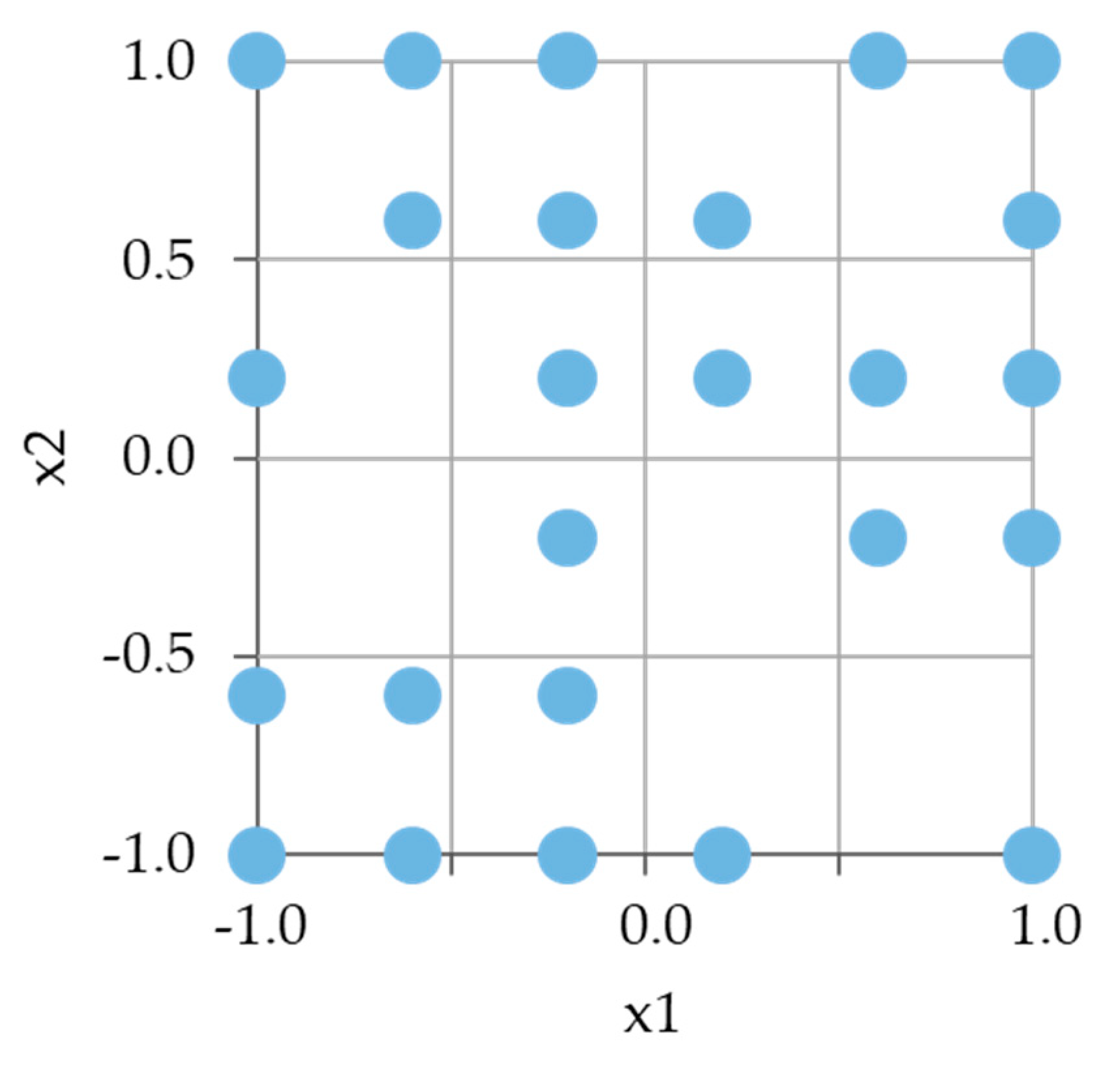
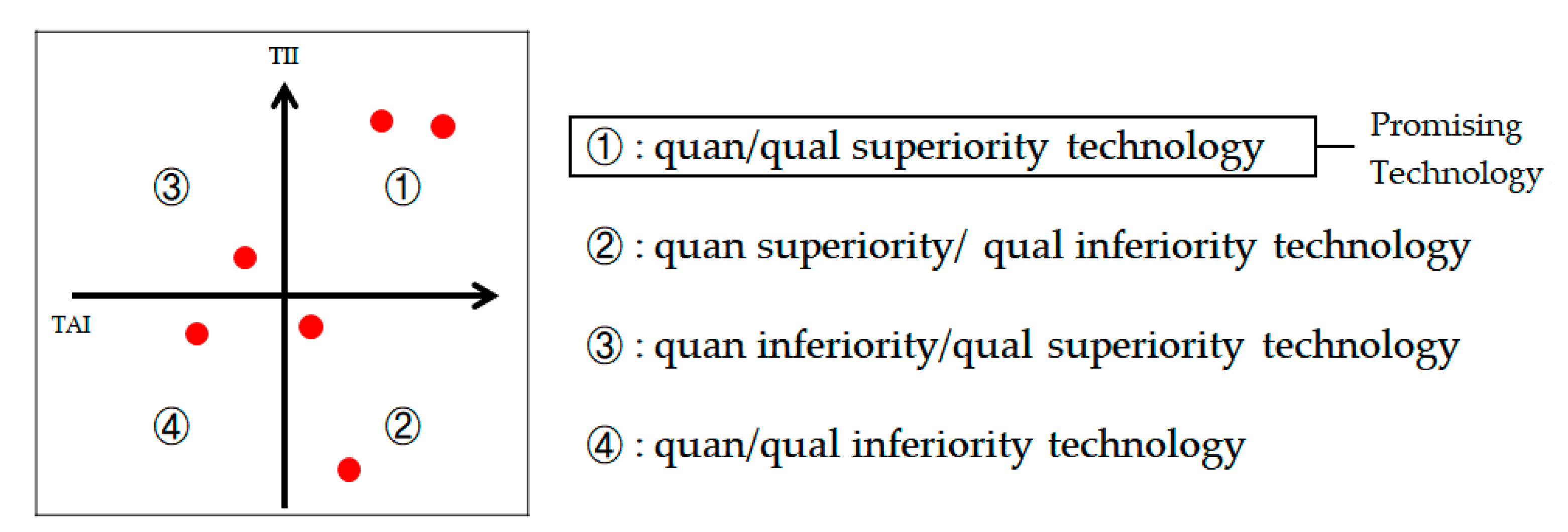

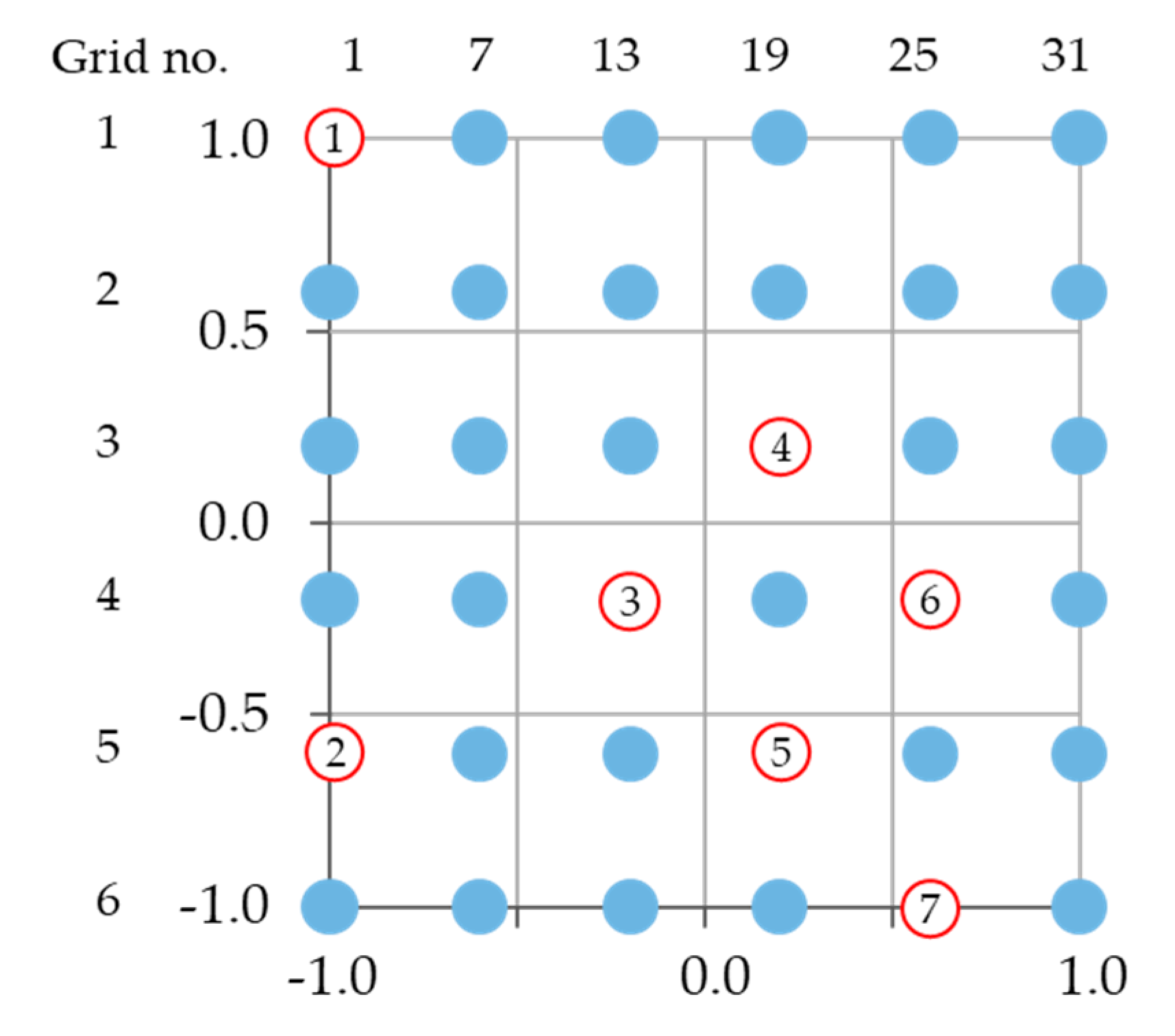

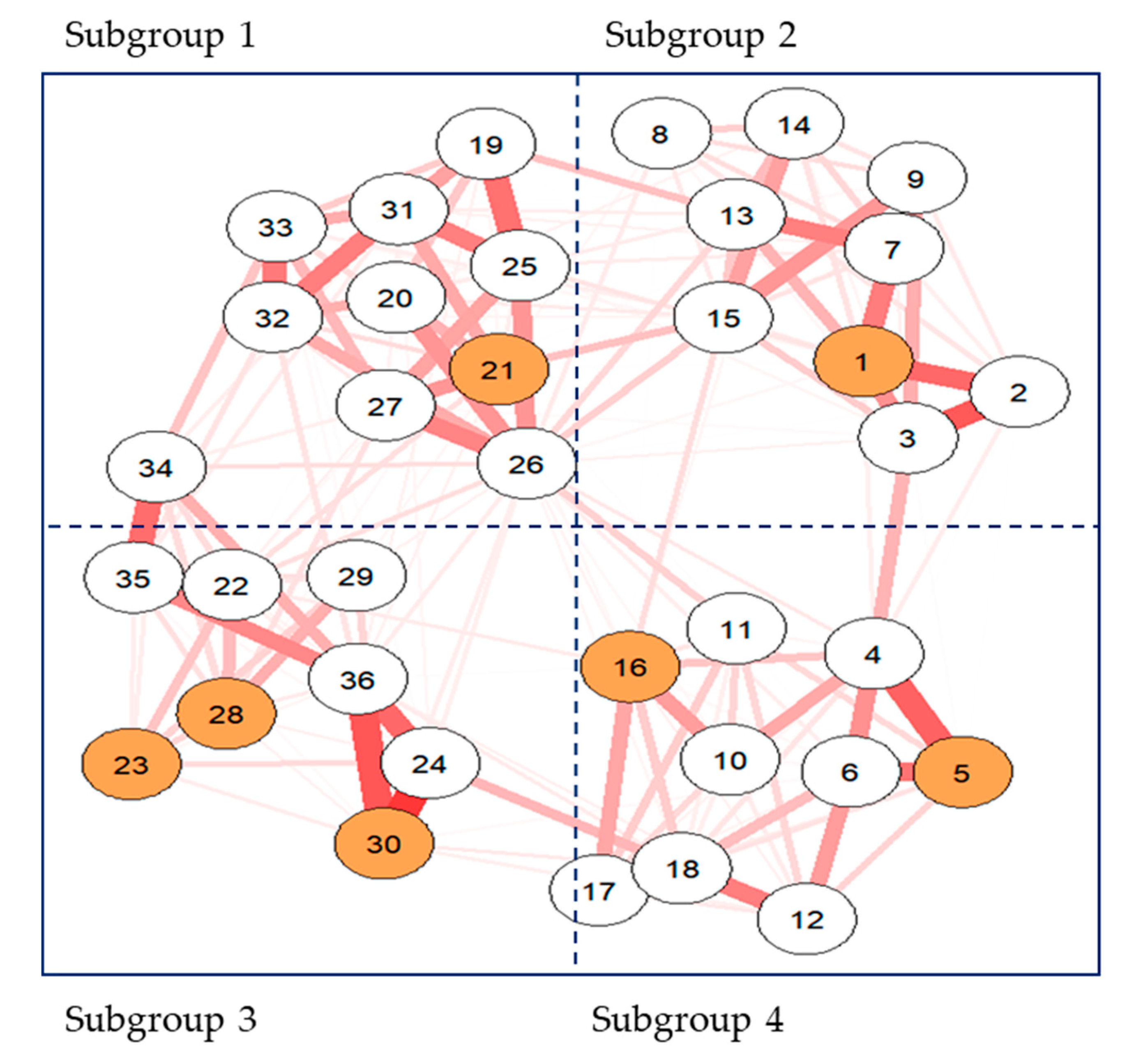
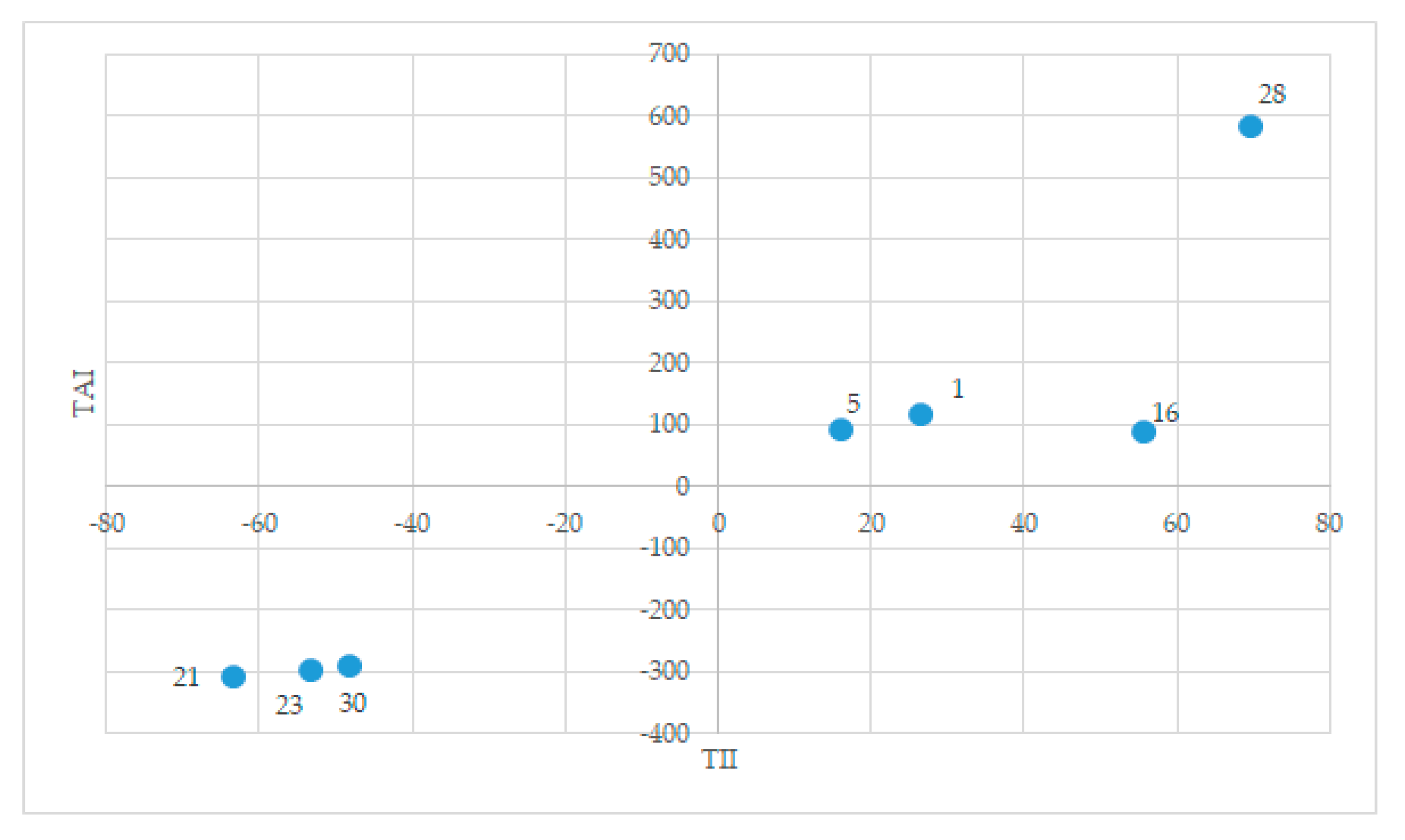
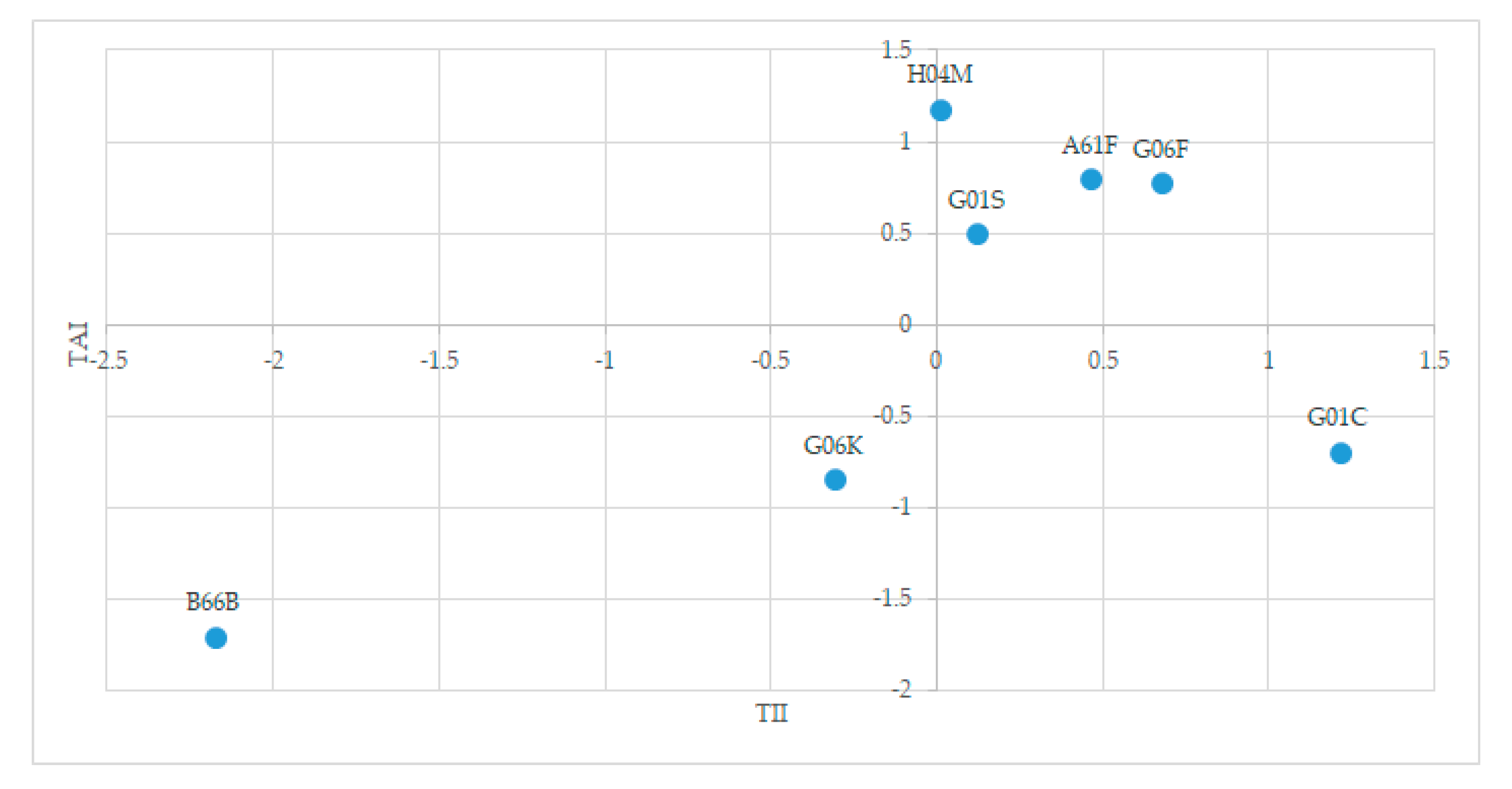
| A61H | G06F | G01C | G08B | A43B | ||
|---|---|---|---|---|---|---|
| Patent 1 | 0 | 0 | 0 | 1 | 0 | |
| Patent 2 | 0 | 1 | 0 | 0 | 0 | |
| Patent 3 | 0 | 0 | 0 | 0 | 0 | |
| Patent 4 | 0 | 0 | 0 | 0 | 0 | |
| Patent 1510 | 0 | 1 | 0 | 0 | 0 |
| Vacuum (No.) | Subclass | ||||||||||||||||||||||||
|---|---|---|---|---|---|---|---|---|---|---|---|---|---|---|---|---|---|---|---|---|---|---|---|---|---|
| 1 | 2 | 3 | 4 | 5 | 6 | 7 | 8 | 9 | 10 | 11 | 12 | 13 | 14 | 15 | 16 | 17 | 18 | 19 | 20 | 21 | 22 | 23 | 24 | 25 | |
| 1(1) | 1 | 0 | 0 | 0 | 0 | 0 | 0 | 0 | 0 | 1 | 0 | 0 | 0 | 0 | 0 | 0 | 0 | 0 | 0 | 0 | 0 | 0 | 0 | 0 | 0 |
| 2(5) | 1 | 0 | 0 | 0 | 0 | 1 | 0 | 0 | 0 | 0 | 0 | 0 | 0 | 0 | 0 | 0 | 0 | 0 | 0 | 0 | 0 | 0 | 0 | 0 | 0 |
| 3(16) | 0 | 0 | 0 | 0 | 0 | 0 | 0 | 0 | 1 | 0 | 0 | 0 | 0 | 0 | 0 | 0 | 0 | 0 | 0 | 0 | 0 | 0 | 0 | 0 | 0 |
| 4(21) | 0 | 0 | 0 | 0 | 0 | 0 | 0 | 0 | 0 | 1 | 0 | 0 | 0 | 0 | 1 | 0 | 0 | 0 | 0 | 0 | 0 | 0 | 0 | 0 | 0 |
| 5(23) | 0 | 0 | 1 | 0 | 0 | 0 | 1 | 0 | 0 | 0 | 0 | 0 | 0 | 0 | 0 | 0 | 0 | 0 | 0 | 0 | 0 | 0 | 0 | 0 | 0 |
| 6(28) | 0 | 0 | 0 | 0 | 0 | 0 | 1 | 0 | 0 | 0 | 0 | 0 | 0 | 0 | 0 | 0 | 0 | 0 | 0 | 0 | 0 | 0 | 0 | 0 | 0 |
| 7(30) | 0 | 1 | 1 | 0 | 0 | 0 | 0 | 0 | 0 | 0 | 0 | 0 | 0 | 0 | 0 | 0 | 0 | 0 | 0 | 0 | 0 | 0 | 0 | 0 | 0 |
| Vacuum (No.) | Subclass |
|---|---|
| 1(1) | A61H, A61F |
| 2(5) | G01S, A61H |
| 3(16) | G06K |
| 4(21) | A61F, B66B |
| 5(23) | H04M, G01C |
| 6(28) | H04M |
| 7(30) | G06F, G01C |
| Vacant Node | Node | Euclidean Distance | Vacant Node | Node | Euclidean Distance | Vacant Node | Node | Euclidean Distance |
|---|---|---|---|---|---|---|---|---|
| 1 | 2 | 0.672 | 23 | 22 | 0.641 | 30 | 24 | 0.787 |
| 15 | 0.905 | 29 | 0.681 | 36 | 0.806 | |||
| 3 | 0.982 | 24 | 1.292 | 29 | 0.956 | |||
| 9 | 1.000 | 36 | 1.700 | 35 | 1.162 | |||
| 8 | 1.065 | 35 | 1.954 | 22 | 1.547 | |||
| 5 | 12 | 0.692 | 28 | 29 | 0.592 | |||
| 11 | 1.010 | 22 | 0.735 | |||||
| 4 | 1.086 | 36 | 1.462 | |||||
| 10 | 1.348 | 35 | 1.457 | |||||
| 6 | 1.416 | 24 | 1.462 | |||||
| 16 | 10 | 0.713 | 21 | 20 | 0.548 | |||
| 17 | 0.760 | 27 | 0.563 | |||||
| 11 | 1.073 | 26 | 0.694 | |||||
| 4 | 1.443 | 25 | 0.948 | |||||
| 18 | 1.744 | 32 | 1.074 |
Publisher’s Note: MDPI stays neutral with regard to jurisdictional claims in published maps and institutional affiliations. |
© 2020 by the authors. Licensee MDPI, Basel, Switzerland. This article is an open access article distributed under the terms and conditions of the Creative Commons Attribution (CC BY) license (http://creativecommons.org/licenses/by/4.0/).
Share and Cite
Hwang, J.; Kim, K.H.; Hwang, J.G.; Jun, S.; Yu, J.; Lee, C. Technological Opportunity Analysis: Assistive Technology for Blind and Visually Impaired People. Sustainability 2020, 12, 8689. https://doi.org/10.3390/su12208689
Hwang J, Kim KH, Hwang JG, Jun S, Yu J, Lee C. Technological Opportunity Analysis: Assistive Technology for Blind and Visually Impaired People. Sustainability. 2020; 12(20):8689. https://doi.org/10.3390/su12208689
Chicago/Turabian StyleHwang, Jumi, Kyung Hee Kim, Jong Gyu Hwang, Sungchan Jun, Jiwon Yu, and Chulung Lee. 2020. "Technological Opportunity Analysis: Assistive Technology for Blind and Visually Impaired People" Sustainability 12, no. 20: 8689. https://doi.org/10.3390/su12208689
APA StyleHwang, J., Kim, K. H., Hwang, J. G., Jun, S., Yu, J., & Lee, C. (2020). Technological Opportunity Analysis: Assistive Technology for Blind and Visually Impaired People. Sustainability, 12(20), 8689. https://doi.org/10.3390/su12208689






